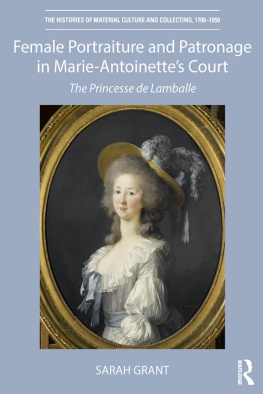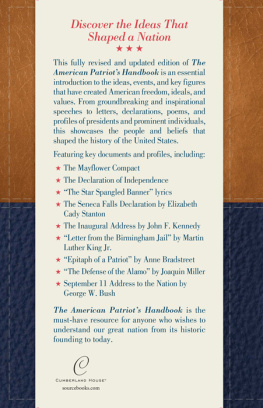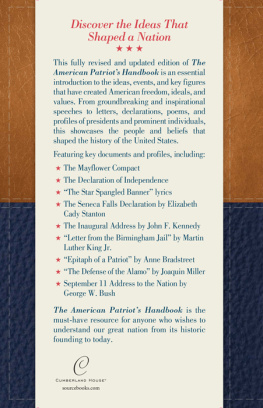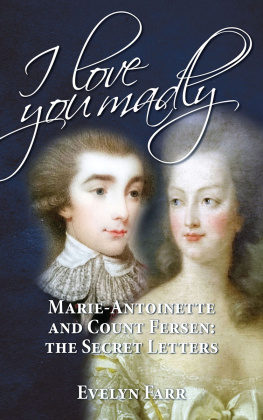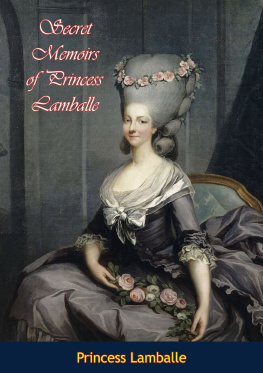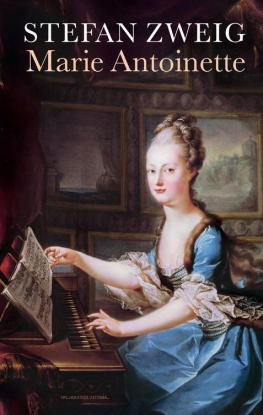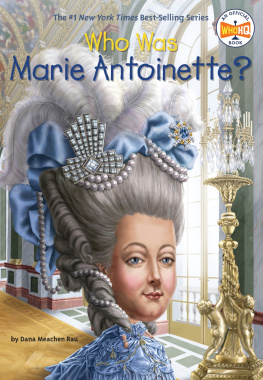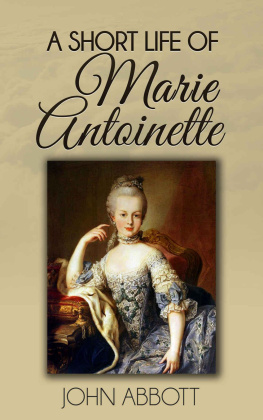Female Portraiture and Patronage in Marie-Antoinettes Court
This comprehensive book brings to light the portraits, private collections and public patronage of the princesse de Lamballe, a pivotal member of Marie-Antoinettes inner circle. Drawing extensively on unpublished archival sources, Sarah Grant examines the princesss many portrait commissions and the rich character of her private collections, which included works by some of the periods leading artists and artisans. The book sheds new light on the agency, sorority and taste of Marie-Antoinette and her friends, a group of female patrons and model of courtly collecting that would be extinguished by the coming revolution.
Sarah Grant is Curator, Prints, at the Victoria & Albert Museum, London.
Cover image: lisabeth Louise Vige Le Brun, portrait of the princesse de Lamballe, 1782, oil on canvas, 80 60 cm (Versailles: Chteau de Versailles) RMN-Grand Palais (Chteau de Versailles) / Grard Blot
The Histories of Material Culture and Collecting, 17001950
Series Editor: Stacey J. Pierson, University of London
The Histories of Material Culture and Collecting, 17001950 provides a forum for the broad study of object acquisition and collecting practises in their global dimensions. The series seeks to illuminate the intersections between material culture studies, art history and the history of collecting. It takes as its starting point the idea that objects both contributed to the formation of knowledge in the past and likewise contribute to our understanding of the past today. The human relationship to objects has proven a rich field of scholarly inquiry, with much recent scholarship either anthropological or sociological rather than art historical in perspective. Underpinning this series is the idea that the physical nature of objects contributes substantially to their social meanings, and therefore that the visual, tactile and sensual dimensions of objects are critical to their interpretation. This series therefore seeks to bridge anthropology and art history, sociology and aesthetics.
Silver in Georgian Dublin
Making, Selling, Consuming
Alison FitzGerald
Private Collecting, Exhibitions, and the Shaping of Art History in London
The Burlington Fine Arts Club
Stacey J. Pierson
Nature and the Nation in Fin-de-Sicle France
The Art of Emile Gall and the cole de Nancy
Jessica M. Dandona
Collecting and Displaying Chinas Summer Palace in the West
The Yuanmingyuan in Britain and France
Louise Tythacott
Female Portraiture and Patronage in Marie-Antoinettes Court
The Princesse de Lamballe
Sarah Grant
For a full list of titles in this series, please visit www.routledge.com/The-Histories-of-Material-Culture-and-Collecting-1700-1950/book-series/ASHSER2128
Female Portraiture
and Patronage in
Marie-Antoinettes Court
The Princesse de Lamballe
Sarah Grant

First published 2019
by Routledge
711 Third Avenue, New York, NY 10017
and by Routledge
2 Park Square, Milton Park, Abingdon, Oxon, OX14 4RN
Routledge is an imprint of the Taylor & Francis Group, an informa business
2019 Taylor & Francis
The right of Sarah Grant to be identified as author of this work has been asserted by her in accordance with sections 77 and 78 of the Copyright, Designs and Patents Act 1988.
All rights reserved. No part of this book may be reprinted or reproduced or utilised in any form or by any electronic, mechanical, or other means, now known or hereafter invented, including photocopying and recording, or in any information storage or retrieval system, without permission in writing from the publishers.
Trademark notice: Product or corporate names may be trademarks or registered trademarks, and are used only for identification and explanation without intent to infringe.
Library of Congress Cataloging-in-Publication Data
A catalog record for this book has been requested
ISBN: 978-1-138-48082-7 (hbk)
ISBN: 978-1-351-06182-7 (ebk)
Typeset in Sabon
by Apex CoVantage, LLC
For Richard and Cherrilyn Grant
Contents
Colour Plates
Figures
I first became interested in the princesse de Lamballe in 2008 when accompanying the V&As Drouais portrait of Marie-Antoinette to the exhibition on the queen at the Grand Palais in Paris. Wandering the empty gallery as the last few pictures were hung, I came face to face with Hickels portrait of the princess and was struck by how at odds its lively representation was with her reputation. In the decade that has followed, I have been fortunate enough to receive assistance from many people.
I wish to begin by thanking my former supervisors, Professor Geraldine A. Johnson and Dr Linda Whiteley. I am enormously grateful to them both for their time, expertise and continuing support.
I warmly thank Madame Genevive Eltvedt for her kind interest and for passing on numerous useful details to me. I gratefully acknowledge the generous assistance of Professor John Rogister, who gave me the benefit of his extensive specialist knowledge.
I am indebted to His Excellency, Mr Hakki Akil, the former Turkish Ambassador to France, for so graciously allowing me to visit the htel de Lamballe. This was pivotal to my understanding of the princesss collections and I respectfully thank His Excellency for so kindly extending me this courtesy.
For his vital and generous help I owe a debt of gratitude to M. Olivier Delahaye. I also thank Mme Batrix Saule and Mme Nomie Wansart for their kind assistance in the early stages of my research. I received essential and most kindly extended assistance from M. Pierre Jugie at the Archives Nationales, and M. Patrick Latour and M. Goran Proot at the Bibliothque Mazarine. I am grateful to Dott.ssa Edith Gabrielli and Dott.ssa Maria Barbara Bertini at the Archivio di Stato and Biblioteca Reale in Turin. Special thanks go to Mme Paulette Dobet-Pincemin and Mme Marylne Languille at the Mairie de Lamballe. I am also most grateful to Mme Anne Brock at the Banque de France. For their support during my DPhil, I am thankful to Geoff and Carol Vogel.
This book is supported by a Publications Grant from the Paul Mellon Centre for Studies in British Art. Its publication has also been made possible by a grant from the Scouloudi Foundation in association with the Institute of Historical Research.
During the course of my doctoral research and preparation for this book, numerous individuals were kind enough to help me: Lena nimmer, Prof. Laura Auricchio, Louise Baker, M. Christian Baulez, Mme Helen Bieri Thomson, Judith Bohan, Clare Browne, Mme Lonor Brun, Melissa E. Buron, Julie Bush, Dr Anne Byrne, Valentina Calamandrei, Juliet Carey, Davide Cermignani, Pier Franco Chillin, Heather Cole, M. Hubert Demory, Mme Virginie Desrante, Robert P. Emlen, Sally Goodsir, Prof. Antony Griffiths, Mag. Alexandra Hanzl, Kate Heard, Dawn Heywood, Amanda Isaac, M. Thierry Jaegy, Prof. Colin Jones, Mme Marion Kalt, Marian Kelly, Dr Cory Korkow, Nora S. Lambert, Adrian LeHarivel, Elenor Ling, Carlotta Margarone, Dr Meredith Martin, Dr Tessa Murdoch, Charles Noble, Dr Susan North, Elissa OLoughlin, Karin Olsson, Frank Partridge Andrew Peppitt, Dr Patrizia Piergiovanni, Mikael Persenius, Prof. Gervase Rosser, Marina Rouyer, Michael Ryan, Dr Jon L. Seydl, Petr Slouka, Dr Jennifer Tonkovich, James Towe, Dr Nuno Vassallo e Silva and Ins Villela-Petit.

